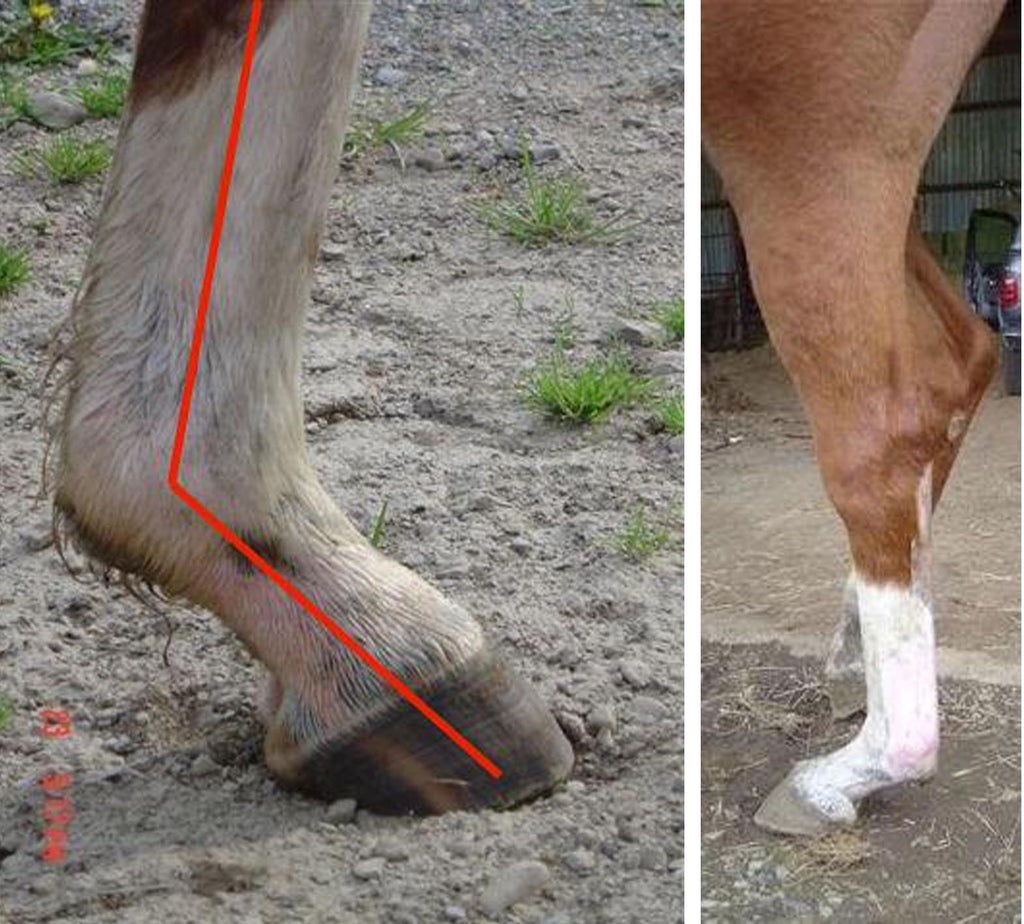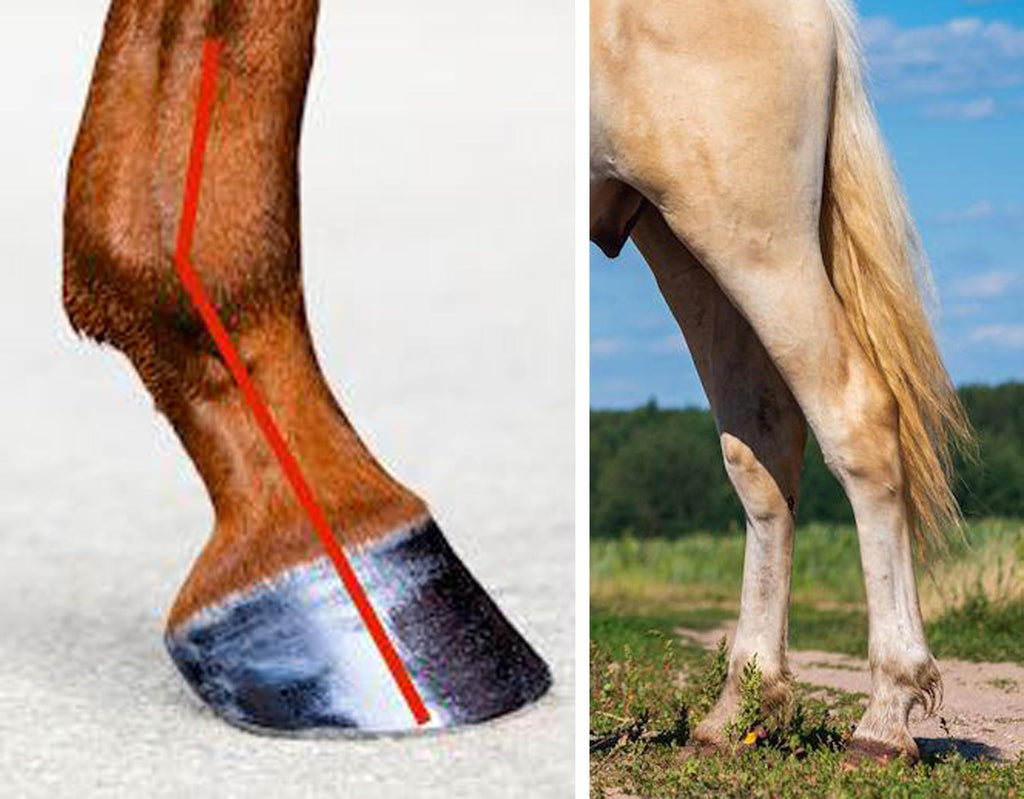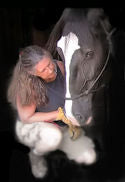What is Degenerative Suspensory Ligament Disease, and What can I do About it?
The Ins & Outs of Degenerative Suspensory Ligament Disease
Does you horse show any of the following symptoms?
- Stumbling and tripping
- Digging hole and standing with fronts in the hole
- Unexplained lameness
- Refusal to walk
- Swollen Fetlocks
- Frequent stretching of leg or stomping
- Biting at suspensory branches
- Dropped pasterns aka 'Coon Footed'
- If the hind limbs are affected, gradual straightening of the hock angle, post legged
It may be what's commonly known as Degenerative Suspensory Ligament Disease (DSLD), which is now commonly known as Equine Systemic Proteoglycan Accumulation (ESPA).

It's a painful condition that affects primarily:
- Paso Finos
- Arabians
- Warmbloods
- Thoroughbreds
- Morgans
- American Saddlebreds
- Quarter Horses
- Appaloosas
- Peruvian Pasos
It is most prevalent in Peruvian Pasos.
So what exactly is Degenerative Suspensory Ligament Disease (DSLD)/Equine Systemic Proteoglycan Accumulation (ESPA)? And how does it correlate to the hooves of a horse?
Originally thought to be a disease that affects only the suspensory ligament, it has, in fact, been found to be a systemic disorder that affects all of the connective tissue in the body and organs of the horse.
“Degenerative suspensory ligament desmitis as a systemic disorder characterized by proteoglycan accumulation”
- Published from the Department of Large Animal Medicine at the College of Veterinary Medicine at the University of Georgia.
Unfortunately, at this time, there is no cure for DSLD. Supportive measures can be put into place to help manage the disease. Correct barefoot trimming is a primary measure that must be taken to help the horse, diet, of course, is another large factor to help mitigate inflammation. Suspension of any riding of the horse with DSLD is a given.
So what about trimming the horse with DSLD?
It is said that a balanced, natural, barefoot hoof trim. A square toe, for easier break-over, seems to help most horses with DSLD.
When my mare was diagnosed with DSLD, I trimmed her hooves religiously every 4 weeks. Once I went over the 4 week trim cycle, she became noticeably worse. So we kept her well trimmed with impeccable balance. I did not, however, square off the toes. But, the proper balance of the hooves affected her pain levels immensely! That meant ensuring that her hooves were balanced medio-lateraly, diagonally and the proper 1/3:2/3 ratio of the hooves, from the toe to the heels were exact.
I also took her off all processed food and supplements, and used special herbs for pain relief, White Willow Bark was the successful herb for controlling her pain. Once I did that, all signs of Cushings Disease (yes, she had Cushings) disappeared, she was able to go out with the herd and graze grass again. She lived for another 2 years in relative comfort until her rear suspensory snapped. We then had her euthanized humanely.
It is a heart-breaking situation for the horse as well as for the horse owner.
The typical post-legged stance of a horse with DSLD:
 Photos above courtesy of http://dsld-vet.blogspot.com
Photos above courtesy of http://dsld-vet.blogspot.com
Compare the above photos of a horse with DSLD to those of a healthy horse:

DSLD usually appears later in the horse’s adult life (greater than 15 years old). However, DSLD has been diagnosed in foals and horses younger than 15 years old.
If a horse is suspected to have DSLD, a complete exam, including an ultrasound, should be done to rule out any other causative factors. DSLD is unique in that it has a bilateral distribution. This means that both forelimbs, both hindlimbs or all four limbs are affected. A horse with DSLD will be severely lame on affected limbs after a fetlock flexion test and will react negatively to palpation of the suspensory ligament and its branches. The suspensory ligament will also feel harder and thicker than a normal, healthy suspensory ligament, and the area may be warm and swollen.
Again, I must reiterate, that should the diagnosis be positive for DSLD, then impeccable trimming of the hooves must be maintained in order to help the horse stay comfortable.
If you suspect your horse has DSLD, please do not hesitate to have a full veterinary exam. While the early stages of DSLD generally do not cause a great deal of discomfort, as the disease progresses, more aggressive treatment may be needed to help the horse live out the rest of its life as comfortably as possible. Allow the horse as much movement as it wishes; do not confine the horse in a stall. Wrapping the legs may be beneficial, as well as hosing the area with cool water to help comfort the horse. Do not ride the horse, or cause any excess exercise.
Allow your horse to be a horse.
Building a Supportive Barefoot Community
The team at Scoot Boot believe passionately in the barefoot horse and strive to build a supportive community of barefoot horse lovers.
Find more information about using Scoot Boots here.

Gwen Santagate is the author of "10 Secrets to Healthy Hooves" . For the last 37+ years, she has maintained healthy hooves with natural trimming on thousands of horses and specialized in pathological rehabilitation hoofcare for the last 18 years. She keeps a small herd of her own equines and continues to offer consults for horses in need.
